OLIVIA STERLING: THE BITTER SWEETNESS OF LAUGHTER
In the vibrant, unsettling world of Olivia Sterling, laughter and pain walk hand in hand. Her paintings, with their bright surfaces and flat, confident lines, peel back the comforts of everyday life to reveal the deep, persistent absurdities of race, identity, and oppression. Born in 1996 in Peterborough, England, Sterling studied at the Royal College of Art in London before quickly establishing herself as one of the boldest voices in contemporary figurative painting. Drawing on humor, historical references, and a sharp eye for social critique, she crafts a visual language that is at once playful and disquieting.
Much of your art explores issues of race, identity, and everyday life. What role do you think art can play in confronting or questioning social norms?
Well, everything is so disheartening and painful; the rise of the facism is obviously upsetting and even more so to its victims which is the basis of my painting. Predominantly containing accidents and threats amongst frivolous overindulgence of food (see french noises, manslaughter, and I’d do it again) this juxtaposition is meant to mimic the state of subjugation we are stuck; numbed by distractions and luxuries at the expense of others. In the past, pain and pleasure could be seen through the connection of sugar to slavery. Today it can be seen with the correlation of cheap clothes and bad working conditions or Happy Potter and TERFS or even sadly still slavery and chocolate. It keeps happening so there must be pleasure in oppression. Pain and pleasure are the basis of my painting.Similarly, why would you want to think yourself more attractive/ intelligent/ superior to another person? To feel good about yourself. The paintings, ultimately, are about expense.
Humor seems to be an important part of your work, often subtle, sometimes disconcerting. How do you see the relationship between humor and critique in your practice?
I use humour to critique. Laughter and empathy are bound up with one another as you have to laugh at something or someone. Laughter can be subversive or dissociative, even expressive or alienating. In my painting I jump from illustrating the laughter of the oppressed to laughter of the oppressor. Understanding the joke, laughing at the pain of others or laughing to aid your own pain all involve the self and how you relate to another. So, with paintings like (lincolnshire sausages, all inclusive, the squirty cream, nigella) the oppressed are laughing. Through comparisons of skin colour to editable matter and in scenes where the dominant figure is humiliated. Laughter here is employed to digest, clarify and transform the oppression that occurs. I hope this highlights its absurdity, rendering it absurd, illogical and quixotic. Whereas in the reverse when an oppressor is laughing it can be used as a tool to dehumanise, subjectate and to distance oneself from being human through the act of laughing at someone. In doing this I hope to crystallise the abstract notion of oppression through this duality.
Your work often plays with color, pattern, and skin tone in striking, unexpected ways. What draws you to this visual language, and how has it evolved over time?
A large part of the paintings is the study of skin colour. I like to think about how white people aren't white, they are pink and peach, so 'w' and 'p' adorn the white figures. I do this to confuse identification. The descriptor doesn’t reflect the actual skin colour of the figure thus adding to the absurdity of race. The words alone ingrain a binary of superiority. As I am focusing on this false identification I wanted to parallel this visually with flat, readable visual representations. I take from medieval illustration, caricature, cell animation and scientific diagrams whose primary function is to communicate. The paintings therefore are simplified and flat. I like very readable paintings; I enjoy their practicality and quickness. I find that confidence in markings to be - dare I say - thrilling, which is what I wish to replicate in mine.
Which artists, writers, or thinkers have most influenced your vision? And are there unexpected sources that feed your imagination?
I am the most obvious, boring figurative painter - I like Bacon, Guston, Colescott and Bonnard as I enjoy paintings that display a painter’s domestic life, intensified. So, my everyday life has constant inspiration. Especially those around me; family members and friends have an interesting way of speaking, so I get given titles all the time just by existing among them. My last show with Meyer Riegger was titled ‘Your Cheeks are Wine’ which was a comment from my friend about how happy I looked at an opening.
Olivia Sterling is releasing a print with Goldmark Atelier Editions goldmarkatelier.com and is preparing for her next solo show in 2026.
Infos meyer-riegger.com
Infos meyer-riegger.com
Photos by Sam Khoury
Originally published in CITY MAGAZINE INTERNATIONAL #1
GALLERY

Ode (Shines like a Coin), 2021

Lincolnshire Sausages, 2023

the Word Has Fallen Out of My Head, 2023

Titlarks, 2023

Glamorous Desserts for Entertaining, 2023

